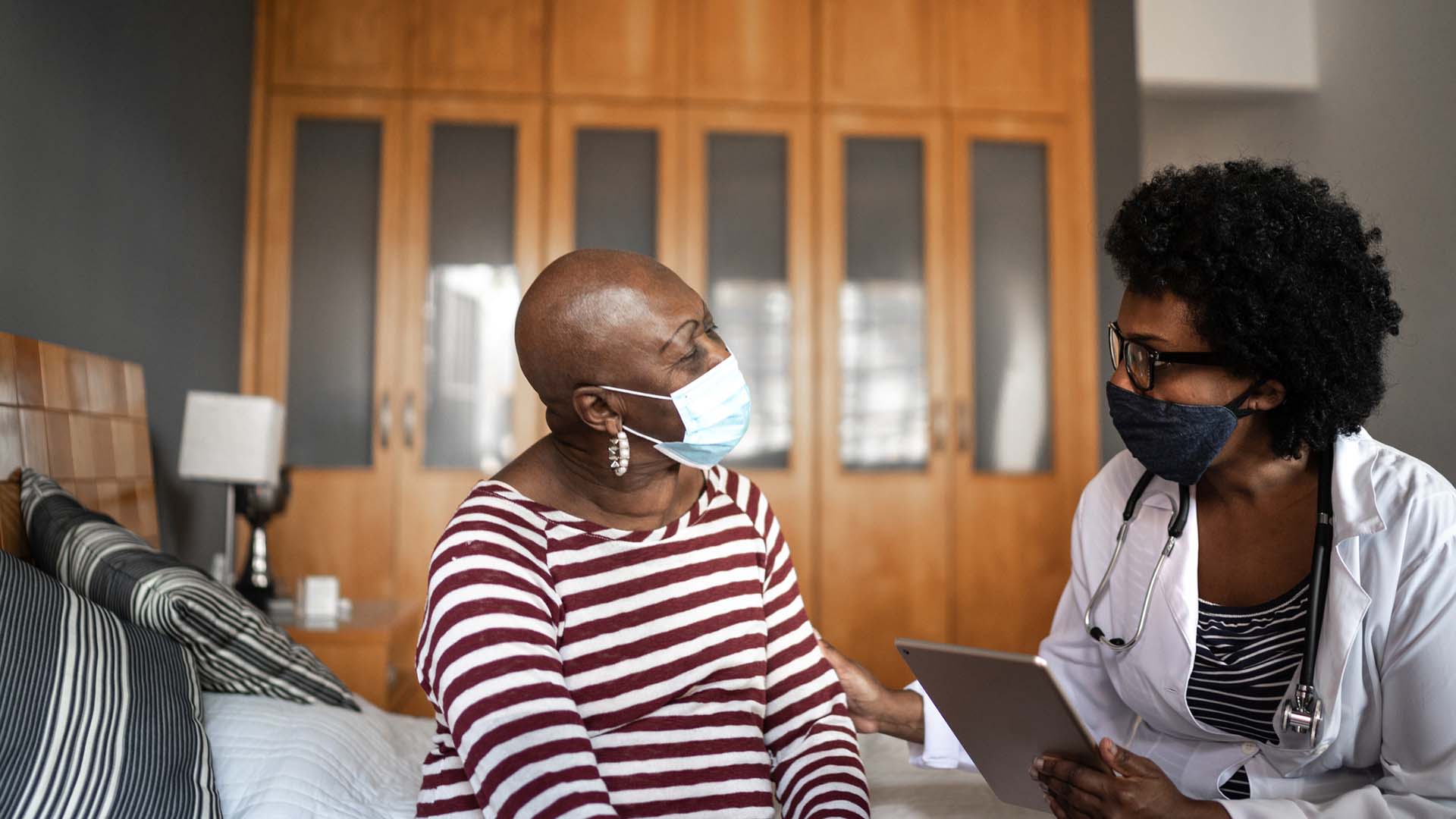Updated on September 26, 2024
A cancer recurrence refers to a cancer that returns after treatment. It typically refers to cancer that returns after a period of time when the cancer could not be detected. For anyone diagnosed with breast cancer, recurrence is an important consideration when making decisions about treatment and follow-up care after treatment.
Cancer recurrences can be categorized based on the location in the body where the cancer recurs. There are three basic types—local, regional, and distant.
Local recurrence
This refers to breast cancers that return in the same breast where the cancer initially developed or in nearby tissues. Nearby tissues can include the chest wall (the bones, muscles, and other tissues that protect the organs in the torso) and scar tissue.
Symptoms of local breast cancer recurrence
- Lumps or nodules. These can occur in the same breast that was treated for cancer. If a person has had a mastectomy, these can appear under the skin of the chest. These are typically painless.
- Changes to the skin, such as redness, inflammation, and thickening on or near surgical scars.
- Discharge from the nipple and/or changes to the nipple, such as the nipple becoming flattened.
- Changes to the firmness of the breast, such as the breast becoming unusually firm.
Regional recurrence
This type of recurrence affects the lymph nodes, small glands that are a part of the immune system. Lymph nodes act as filters, helping to remove waste, damaged cells, waste products, foreign substances, excess fluid, and damaged/diseased cells (like cancer cells). There are hundreds of lymph nodes throughout the body, connected by a network of lymph vessels, which are similar to veins in how they function.
Symptoms of regional breast cancer recurrence
“Regional lymph nodes” refer to the lymph nodes around a tumor. With breast cancer, regional lymph nodes refer to the lymph nodes in the armpit, neck, and around the collarbone. With a regional recurrence, these lymph nodes can become swollen and hard.
Other symptoms can include chest pain, difficulty swallowing, and pain and/or numbness in one arm and/or shoulder.
Distant recurrence
Also referred to as a “metastatic recurrence.” With this type, cancer cells have reached other sites of the body and formed tumors. While this can affect virtually any part of the body, the bones, liver, lungs, and brain are most common.
Symptoms of distant breast cancer recurrence
- Pain in the areas or the body where the cancer has spread, such as pain in the chest, bones, back, or hips
- Numbness
- Unexplained/unintentional weight loss
- Difficulty eating, nausea, and/or loss of appetite
- Persistent coughing
- Breathing difficulty
- Fatigue
- Headaches
- Seizures
Your best source of information
Every breast cancer diagnosis is different, and your best source of information about a diagnosis, risk of recurrence, and symptoms will be your healthcare team. Always report any changes or symptoms like those described above to your healthcare team.
Can a recurrence affect the opposite breast?
Sometimes a person will have cancer that affects one breast. Then, at a later time, cancer occurs in the second breast. This is not considered a recurrence. In some cases, cancer in the opposite breast may be a metastasis—cancer cells that have broken away from the initial tumor and formed a new tumor.
But in most cases, this is considered a new breast cancer, independent of the initial breast cancer. This is also referred to as a “second cancer.”
Second cancers can begin in many different areas of the body. Cancer in the opposite breast is the most common second cancer that affects people who have had breast cancer.
BRCA gene mutations and previous cancer treatments can increase the risk of certain second cancers. The risk of second cancers is another topic to discuss with a healthcare team.






